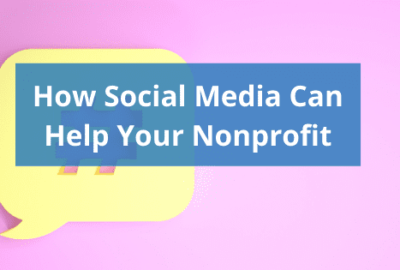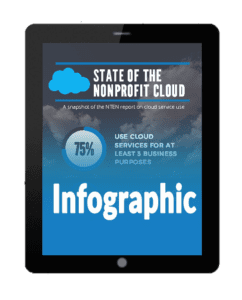Nonprofit Tips
What every nonprofit executive needs to know about information technology
By Deborah Elizabeth Finn
1. A nonprofit CEO does not need to have a lot of hands-on technical experience to participate actively in strategic IT planning.
As long as you thoroughly understand your organization’s overall mission, strategy, and tactics (and are willing to learn a little bit about the technology), you can keep your information technology infrastructure on target. If your organization has an overall theory of change, it can be helpful to have a theory of change for your technology, which explains how every aspect of it is directly (or indirectly) supporting your mission.
Example: Your mission is to save the whales (not to maintain a file server, database, and web site)! In order to save the whales, you need a strategy: to stay informed and inform others about the issues, lobby for policy changes, to issue action alerts, to raise money, and to maintain relationships with various legislators, constituents, communities, donors, potential friends, and allies. Keep pressing for tactics that will help you achieve your desired outcomes (saving whales); this will enable you to hold your own in most discussions with technical experts.
2. You can keep an eye on innovations in IT, and think about possible uses for them in the nonprofit sector, even if you don’t have a technical background.
If you regularly read the technology columns of a good daily newspaper and a few nonprofit technology web sites (such as TechSoup.org, Idealware.org, or NTEN.org), you will soon catch on to the basic concepts and terminology. (Don’t worry if it seems over your head at first – you’ll catch on! Everybody has to start somewhere. Just run your eyes over the articles on a regular basis.)
Example: You work for a nonprofit organization with five employees and four non-networked computers. It’s time to link them up so that you and your colleagues can share information and regularly back up your work. As you read articles on w-fi networking, and look at the building where you work – which is a pre-electricity Victorian house only somewhat successfully retrofitted for its current functions – you see that you may actually save money by implementing secure wi-fit.
You ask your IT vendors for estimates on drilling and running cables through the building, and find that the cost of labor, support, upgrades, future expansion, and maintenance for a more conventional network will exceed that of a wi-fi network.
3. Your board of directors should be apprised of and supportive of your organization’s strategic IT planning.
If they don’t see the point of investing in technology that will help you succeed in your mission, it’s time to recruit some board members who are tech-savvy. For example, your region probably has a high-tech corporation, a major manufacturer, or a large retail firm with an extensive IT department. Perhaps you can recruit representatives from these organizations to serve on your board as part of their community benefits program.
4. A tremendous number of high-quality resources for strategic IT planning are available to nonprofits at no charge.
Free advice, products, and services make it possible for nonprofits to lower the risk of trying new technology – but eventually, you’ll have to pay real money to have precisely the right tools for supporting your mission, because…
5. Donated hardware, software, and services can cost a nonprofit more than purchased products or services in the long run.
The cost in person hours of using and maintaining non-standard or sub-standard configurations is astonishingly high, and donated equipment tends to be in non-standard or sub-standard.
Likewise, donated services will cost you a great deal of time in support, supervision, and ongoing maintenance. Beware of the web site design services donated by a close relative of the chair of your board! You may end up with something that you don’t like, can’t use, or can’t easily change. Instead, you should have a twelve-month plan that details the scope of work, the volunteer recruitment, the preparation, the orientation, the supervision, the implementation, the evaluation, and the follow up. Contingency plans are also necessary. Put all of this in writing, and make sure both the volunteer and the nonprofit’s CEO sign it.
6. IT, no matter how strategically you apply it, will probably never save your nonprofit organization significant amounts of money.
However, if you plan and implement it well, it will enable you to work more effectively. In the end, you may find that you are spending fewer staff hours on repetitive clerical tasks, and more staff hours on tasks that only a human can perform; with that change may come a measurably higher success rate in achieving your mission. But don’t be surprised if this raises the bar of expectations on the part of the board, the community, the clients, the constituents, and the donors.
7. You need an in-house IT committee.
Convene an Information Technology team or working group, within your nonprofit, and make sure that you meet regularly to give input to the senior management on strategic IT issues.
The team should include a cross-section of staff – administration and finance, programmatic, secretarial. Be sure to include staff members who are overtly or covertly technophobic; their concerns should be addressed.
8. Secretaries and administrative assistants should be the lynchpins of your IT infrastructure. Budgeting for IT training for these employees can be one of your best investments.
Which staff members are more likely to be there when problems arise, to know about the technical abilities (and phobias) of their colleagues, and to know where the (paper or electronic) files are? Professional development that includes IT training is likely to increase job satisfaction and employee retention. Don’t forget to revise job descriptions and job titles as your secretaries and administrative assistants move into IT management responsibilities!
9. In the long run, IT operating expenses will make up about 70% of your IT budget.
The more obvious line items – such as hardware, software, and network services – will comprise about 30%. The remainder will go to IT support and training. This is a highly counter-intuitive fact of nonprofit life.
10. Social media has a place in your tech strategy. It should also have a place in your communications strategy.
A really successful social media strategy will be supported by solid information technology. For example, if you are engaged in an online campaign that this relevant to your mission, it’s important to gather, analyze, and make use of data about who is responding, what they are doing, and whether they are successful in inspiring other to take action. Ideally, your social media data should be tightly integrated with your constituent relationship management data, so that you understand how staff members, clients, volunteers, donors, board members, journalists, and policy makers are engaged in your campaign. However, it’s not just about using data well; your social media strategist should be also be a good communicator. If he/she does not have training and mentoring in communications, it’s time to offer some.
11. It can be a serious mistake to hire one professional to cover all your organization’s IT needs.
Network administrators, database managers, web site developments, help desk consultants, and social media managers tend to be very different from each other in terms of training, temperament, and career aspirations. If you hire someone who is stellar in one of these areas, and then expect him/her to take responsibility for all of them, you are setting your organization up for employee dissatisfaction and frequent turn-over.
12. “Going to the cloud” is an increasingly good option for nonprofit organizations of every size; however, you need to proceed with caution.
Ask yourself, “is our mission saving the whales, or is it maintaining a file server in our broom closet?” If it’s saving the whales, then it does make sense to look into software as a service, so that you can focus on your mission and let a company that specializes in maintaining software and servers take care of those needs. Still, the responsibility for due diligence lies with you: to understand what level of security and privacy is being offered, to understand your legal rights and responsibilities, and to understand where your data is physically located. You will also need to make contingency plans for situations in which your internet access is down, your data is hacked, or your data is accidentally erased without a back-up. If any of these bring your operations to a halt, you will have not only legal but ethical obligations to fulfill.
13. When you need advice about an IT product or service, the place to start is with someone at a nonprofit organization that is similar to yours.
Look for an organization with programs and operations that resemble your own, and describe your challenge to your counterpart there. He/she may be willing to spend a few minutes talking about the products and services that organization uses, or to connect you with someone who can be even more helpful. Be sure to ask about both the strengths and the weaknesses of any option they mention; you might also want to ask if he/she would decide in favor of that choice or go with something else if the decision had to be made again today.
After you’ve talked to a few counterparts in other nonprofit professionals, you’ll be in a much better position to speak with a nonprofit technology expert about your options.
14. In a nonprofit organization, most strategic IT problems are actually organizational development problems.
Is it a CEO who is resistant to technical innovations? A board of directors that hesitates to make the commitment to raise the money need for the IT infrastructure? Line staff who are already stressed and overworked, and can’t stop to learn and implement new technologies? An inability to make outsourced IT consultants or in-house IT staff understand organizational processes? All the information technology in the world won’t resolve these issues, if you don’t address them at the organizational level.
Bonus items: Hands-on IT skills that the CEO, CFO, and COO of every small nonprofit ought to have:
- How to compose, send, read, and delete email, using the organization’s standard application.
- How to create and save a simple text document, using the organization’s standard application.
- How to post a message to Twitter on behalf of your organization.
- How to post a message to Facebook on behalf of your organization.
This work is licensed under a Creative Commons Attribution-NonCommercial-NoDerivs 3.0 Unported License.








